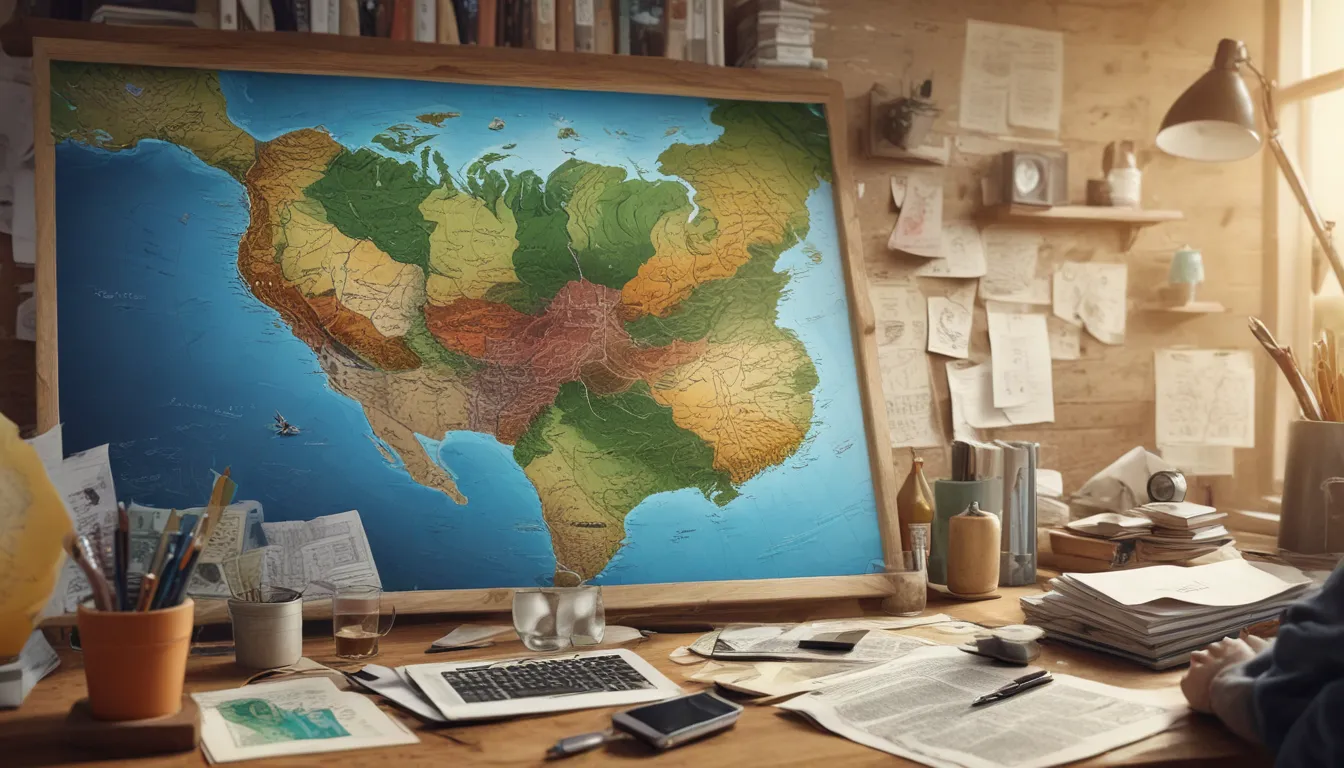A Note About Images: The images used in our articles are for illustration purposes only and may not exactly match the content. They are meant to engage readers, but the text should be relied upon for accurate information.
Welcome to the captivating realm of economic geography, where the intricate dance between economics and geography shapes the world around us. From the spatial distribution of industries to the impacts of globalization, economic geography offers a wealth of knowledge that illuminates the interconnectedness of our global economy. In this article, we will uncover 14 unbelievable facts about economic geography that will expand your understanding of how geography influences the economy and vice versa.
Understanding the Intricacies of Economic Geography
At its core, economic geography delves into how various factors, both physical and human, influence economic activities and resource distribution. This dynamic interplay between geography and the economy not only shapes industries and trade patterns but also impacts the social, cultural, and political landscapes of regions and countries.
The Impact of Location on Economic Activities
One of the key insights of economic geography is the significant role that location plays in determining the success of industries and businesses. Factors such as natural resources, climate, infrastructure, and access to markets all influence the spatial organization of economic activities. Understanding these dynamics is crucial for policymakers, businesses, and investors looking to maximize economic growth and development.
The Power of Proximity in International Trade
In the realm of international trade, proximity to key transportation routes, ports, and trade networks can make or break a country’s competitiveness. Strategic geographic positioning plays a pivotal role in a nation’s ability to engage in global trade, influencing both export and import capacities and overall economic competitiveness on the world stage.
Harnessing the Benefits of Industry Clusters
Industry clusters, where related businesses specializing in similar sectors congregate geographically, are hotbeds of innovation and collaboration. These clusters promote knowledge sharing, technological advancements, and the development of robust networks of suppliers, customers, and skilled workers.
Examining the Transformative Effects of Globalization
Globalization has reshaped the landscape of economic geography, with markets becoming increasingly interconnected and multinational corporations driving the flow of goods, services, and capital across borders. Economic geography has adapted to study the impacts of global supply chains, outsourcing, and the digital economy, providing valuable insights into the changing nature of economic interactions.
Addressing Regional Disparities Through Inclusive Development
Economic geography sheds light on regional disparities and inequalities by examining factors such as income levels, employment rates, and access to resources. This knowledge is instrumental for policymakers seeking to promote inclusive and sustainable development strategies that bridge the gap between economically disadvantaged regions.
Embracing the Concept of Agglomeration for Economic Growth
Agglomeration, the clustering of economic activities in specific areas, can lead to economies of scale, lower production costs, and enhanced efficiency through shared infrastructure and specialized labor markets. Global cities like New York, London, and Tokyo exemplify the benefits of agglomeration in attracting diverse industries and fostering economic growth.
Navigating the Spatial Division of Labor
The spatial division of labor, where regions specialize in specific industries based on comparative advantages in resources, skills, or technology, shapes global trade patterns and economic landscapes. From agriculture to high-tech manufacturing, this division influences how regions contribute to the global economy.
Harnessing the Power of Transportation Systems for Economic Development
Efficient transportation networks are foundational to economic development, facilitating trade, connecting markets, and enabling the movement of goods and people. Economic geographers study how transport infrastructure shapes the spatial patterns of economic activity, influencing regional growth and connectivity.
Environmental Influences on Economic Activities
Environmental factors such as climate, topography, and natural resources play a pivotal role in determining where economic activities flourish. Coastal areas might attract tourism and maritime industries, while resource-rich regions experience growth in extractive industries like mining and oil production.
The Intersection of Political Borders and Economic Geography
National boundaries, trade agreements, and geopolitical relations significantly impact economic activities, influencing the flow of goods, investment, and labor between countries. Economic geographers analyze how political decisions shape regional development, cross-border trade, and global economic integration.
Embracing Technological Advancements in Economic Geography
Technological innovations such as automation, the internet, and digital technologies have revolutionized the business landscape, influencing how industries operate and interact. Economic geography studies the impact of these advancements, including the rise of e-commerce, remote work trends, and the concentration of tech hubs.
Enhancing Urban and Regional Planning through Economic Geography
By understanding the spatial distribution of economic activities, policymakers can make informed decisions about infrastructure investments, land use, and resource allocation. This knowledge enables effective urban and regional planning, fostering sustainable development and enhancing quality of life for residents.
These 14 unbelievable facts about economic geography offer a glimpse into the intricate web of connections that underpin our global economy. By unraveling the complexities of how geography shapes economic activities, economic geographers continue to unlock new insights that inform decision-making and drive sustainable development.
Conclusion
In conclusion, economic geography provides a nuanced and holistic perspective on the dynamic relationship between economics and geography. By exploring the spatial distribution of industries, trade patterns, and development strategies, we gain a deeper understanding of the forces that shape our world. As we navigate the challenges and opportunities presented by a rapidly evolving global economy, the insights offered by economic geography remain invaluable for shaping a more equitable and prosperous society.
FAQs
Q: What is economic geography?
A: Economic geography is a branch of geography that studies how the spatial distribution of economic activities influences the economy.
Q: Why is economic geography important?
A: Economic geography helps us understand why certain industries thrive in specific locations and how geography impacts economic development.
Q: How does economic geography impact businesses?
A: Economic geography enables businesses to analyze market opportunities, identify optimal locations for production and distribution, and adapt to local economic conditions.
Q: What role does globalization play in economic geography?
A: Globalization has transformed economic geography by expanding international trade, creating global supply chains, and influencing regional competitiveness.
Q: Can economic geography help address regional inequalities?
A: Yes, economic geography provides valuable insights for policymakers to address regional disparities and promote economic diversification and sustainable development initiatives.
Embrace the world of economic geography, where the synergy of geography and economics shapes our global landscape. Through a deeper understanding of how location influences economic activities, we can navigate the complexities of our interconnected world and work towards a more balanced and prosperous future. Let the wonders of economic geography inspire you to explore the vast possibilities that lie at the intersection of geography and economics.






